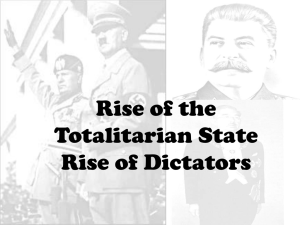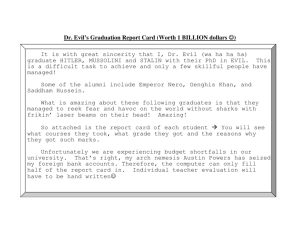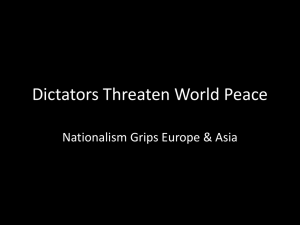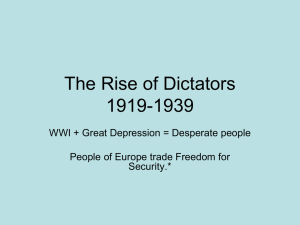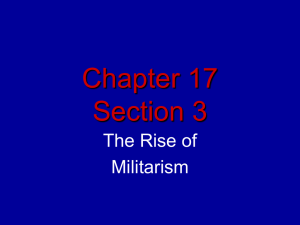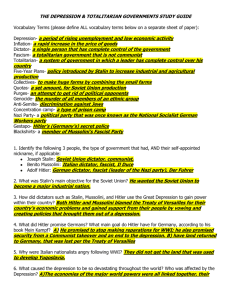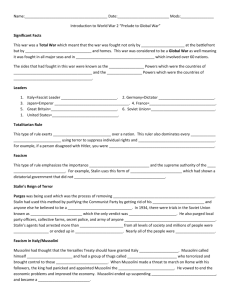Totalitarianism
advertisement
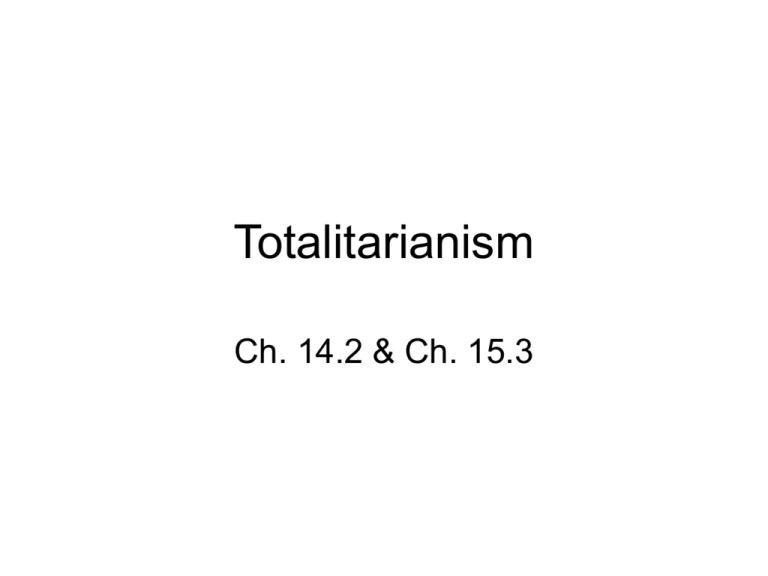
Totalitarianism Ch. 14.2 & Ch. 15.3 Stalin Becomes Dictator A New Leader • Trotsky and Stalin compete to replace Lenin when he dies Joseph Stalin—cold, hard Communist Party general secretary in 1922 - Stalin gains power from 1922 to 1927 • Lenin dies in 1924 • Stalin gains complete control in 1928; Trotsky forced into exile Stalin was a Totalitarian List examples of each State control of individuals Methods of Enforcement Ideology Totalitarianism Modern Technology Dynamic Leader Dictatorship of One-Party Rule State Control of Society Benito Mussolini – Fascist ruler of Italy New Political Movement Fascism is new, militant political movement • Emphasizes nationalism and loyalty to authoritarian leader Mussolini Takes Control Italians want a leader who will take action • Fascist Party leader, Benito Mussolini, promises to rescue Italy • October 1922, Mussolini takes power legally • Italian king puts Mussolini in charge of government Il Duce’s Leadership • Mussolini takes firm control of politics and economy in Italy Adolf Hitler – Fascist ruler of Germany A New Power • Adolf Hitler—obscure political figure in 1920s Germany The Rise of the Nazis • Nazism—German brand of fascism • Hitler becomes Nazi leader, plots to seize national power • Mein Kampf—Hitler‘s book detailing beliefs, goals • Germans turn to Hitler when economy collapses The Führer Is Supreme • Hitler takes control over every aspect of German life Hitler’s New Power • Hitler is named chancellor • Turns Germany into totalitarian state • Uses brutal tactics to eliminate enemies • Nazis take command of economy Hitler Makes War on the Jews • Nazis deprive Jews of rights, promote violence against them Mussolini & Hitler were a Totalitarian List examples of each Cultural Chief Examples Social Characteristics of Fascism Economic Basic Principles Political
